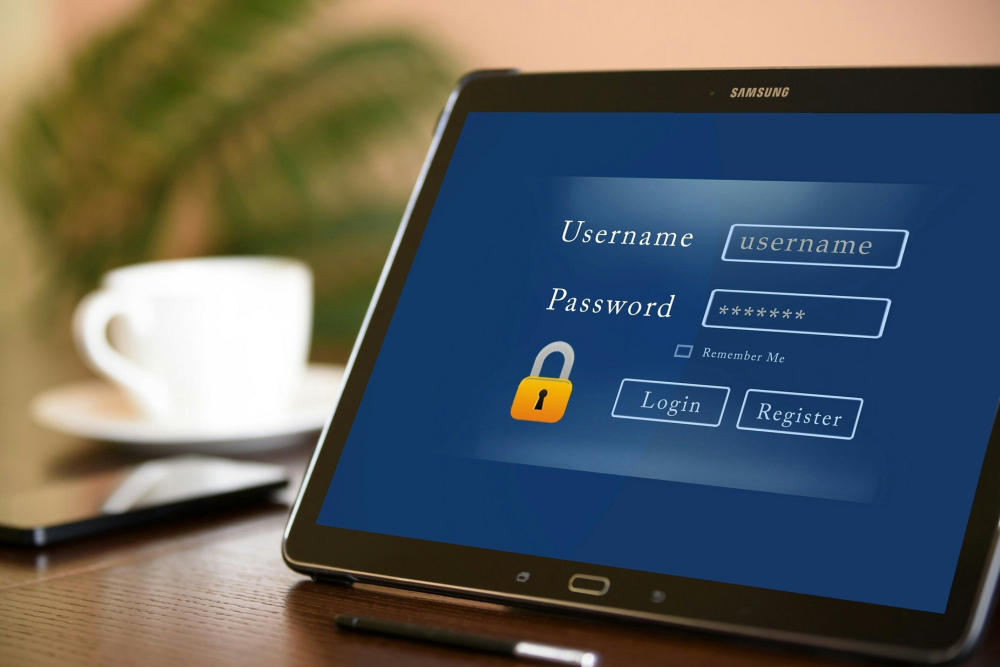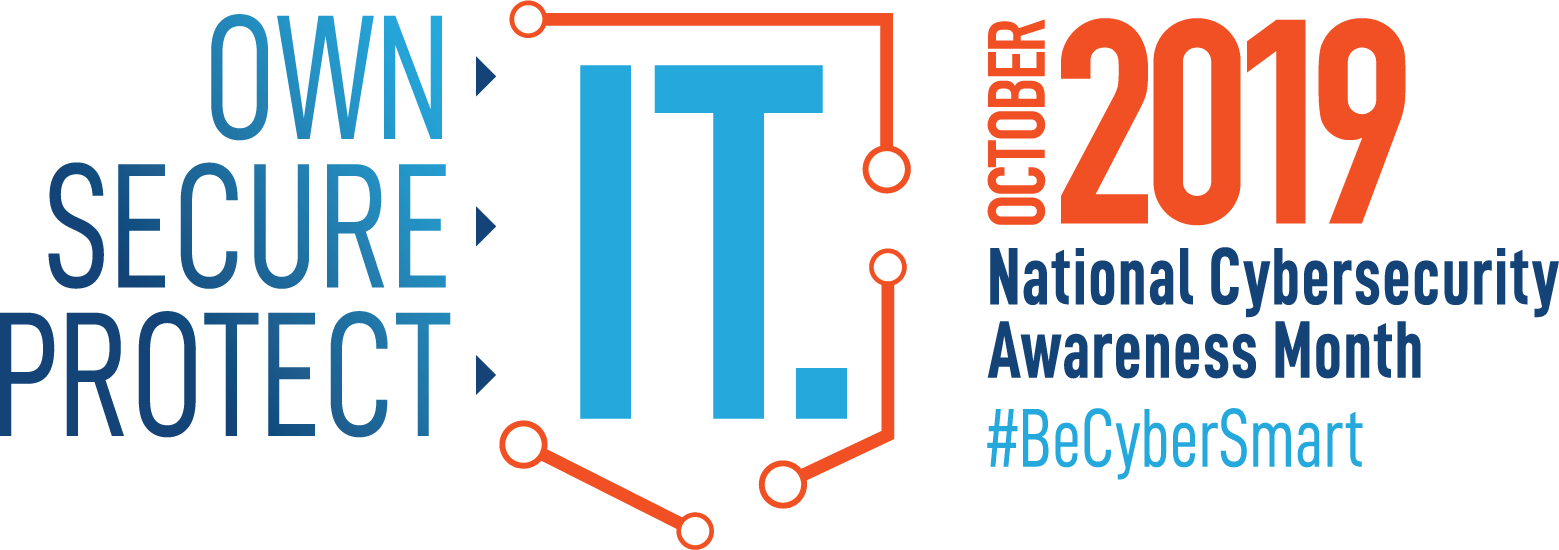October 02, 2019

The line between our online and offline lives is indistinguishable. In these tech-fueled times, our homes, societal well-being, economic prosperity and nation’s security are impacted by the internet.
Own > Secure > Protect

Under the overarching theme of ‘Own IT. Secure IT. Protect IT.’, the 16th annual National Cybersecurity Awareness Month (NCSAM) is focused on encouraging personal accountability and proactive behavior in security best practices, digital privacy and draw attention to careers in cybersecurity.
Own IT.
- Never Click and Tell: Limit what information you post on social media—from personal addresses to where you like to grab coffee. What many people don’t realize is that these seemingly random details are all criminals need to know to target you, your loved ones, and your physical belongings—online and in the physical world. Keep Social Security numbers, account numbers, and passwords private, as well as specific information about yourself, such as your full name, address, birthday, and even vacation plans. Disable location services that allow anyone to see where you are – and where you aren’t – at any given time. Read the Social Media Cybersecurity Tip Sheet for more information.
- Understand your digital profile: Internet-based devices are present in every aspect of our lives: at home, school, work, and on the go. Constant connection provides opportunities for innovation and modernization, but also presents opportunities for potential cybersecurity threats that can compromise your most important personal information. Understand the devices and applications you use.
- Keep Tabs on Your Apps: Most connected appliances, toys, and devices are supported by a mobile application. Your mobile device could be filled with suspicious apps running in the background or using default permissions you never realized you approved—gathering your personal information without your knowledge while also putting your identity and privacy at risk. Check your app permissions and use the “rule of least privilege” to delete what you don’t need or no longer use. Learn to just say “no” to privilege requests that don’t make sense. Only download apps from trusted vendors and sources.
Secure IT.
- Shake Up Your Passphrase Protocol: According to National Institute for Standards and Technology (NIST) guidance, you should consider using the longest password or passphrase permissible. Get creative and customize your standard password for different sites, which can prevent cybercriminals from gaining access to these accounts and protect you in the event of a breach. Use password managers to generate and remember different, complex passwords for each of your accounts.
- Double Your Login Protection: Enable multi-factor authentication (MFA) to ensure that the only person who has access to your account is you. Use it for email, banking, social media, and any other service that requires logging in. If MFA is an option, enable it by using a trusted mobile device, such as your smartphone, an authenticator app, or a secure token—a small physical device that can hook onto your key ring. Read the Multi-Factor Authentication (MFA) How-to-Guide for more information.
- Play Hard To Get With Strangers: Cybercriminals use phishing tactics, hoping to fool their victims. If you’re unsure who an email is from—even if the details appear accurate— or if the email looks “phishy,” do not respond and do not click on any links or attachments found in that email. When available use the “junk” or “block” option to no longer receive messages from a particular sender.
Protect IT.
- If You Connect, You Must Protect: Whether it’s your computer, smartphone, game device, or other network devices, the best defense against viruses and malware is to update to the latest security software, web browser, and operating systems. Sign up for automatic updates, if you can, and protect your devices with antivirus software.
- Stay Protected While Connected: Before you connect to any public wireless hotspot – like at an airport, hotel, or café – be sure to confirm the name of the network and exact login procedures with appropriate staff to ensure that the network is legitimate. If you do use an unsecured public access point, practice good Internet hygiene by avoiding sensitive activities (e.g., banking) that require passwords or credit cards. Your personal hotspot is often a safer alternative to free Wi-Fi. Only use sites that begin with “https://” when online shopping or banking.
- Beware of Social Media Bots: Social Media Bots are becoming more prevalent and better at mimicking human behavior on social media platforms. As of 2017, technology companies are seeking investments and further incorporation of Social Media Bots into social media services and platforms, expanding “future digital communication” to provide a myriad of services as automated assistants. As Social Media Bots gain a greater foothold in social media and daily life, the potential uses, for good and malicious purposes, are ever expanding.
For more cybersecurity information see:
| 5 Ways to be Cyber Secure at Work | Defending Against COVID-19 Cyber Scams |
| Cybersecurity Checklist: Are You Protected | Avoiding Social Engineering and Phishing Attacks |
comments powered by Disqus